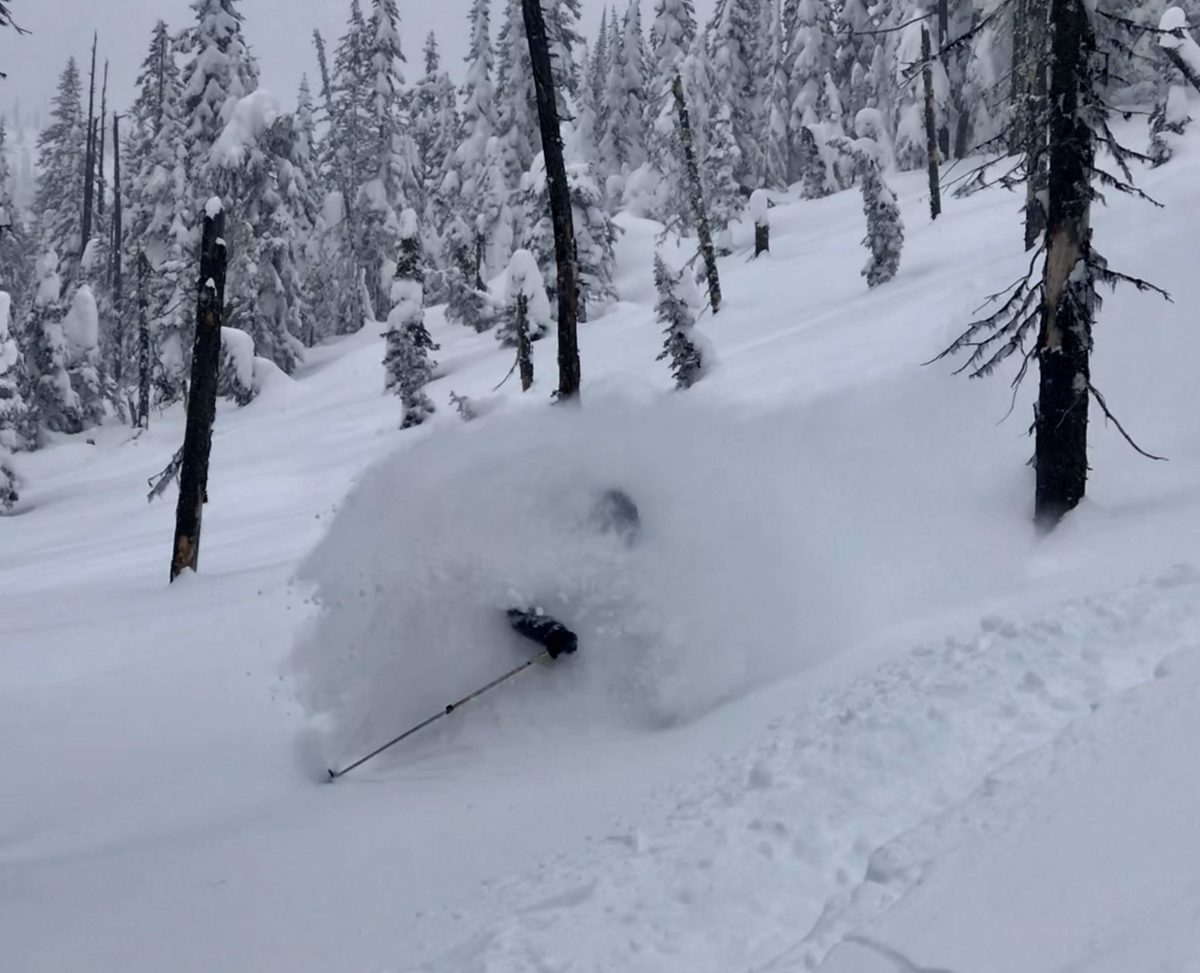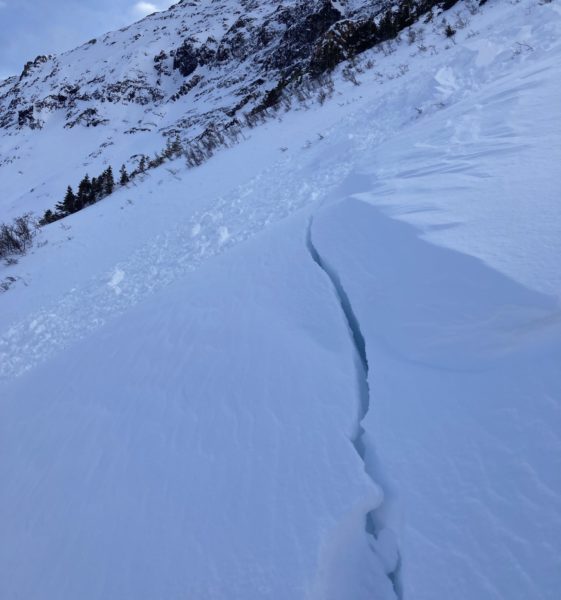How cohesive or loose snow is.
Practitioners often refer to how cohesive the snow is, which is an informal measure of how well the grains are bonded together. Snow cohesion is observed by feeling and touching the snow; snow that feels denser, feels slabby, or clumps easily into snowballs is more cohesive than snow that feels loose or sugary. Cohesive snow forms slabs, and incohesive snow forms weak layers or loose snow avalanches. Monitoring for changes in storm snow cohesion can clue you into changes in stability or the type of avalanche problem that you need to manage.



